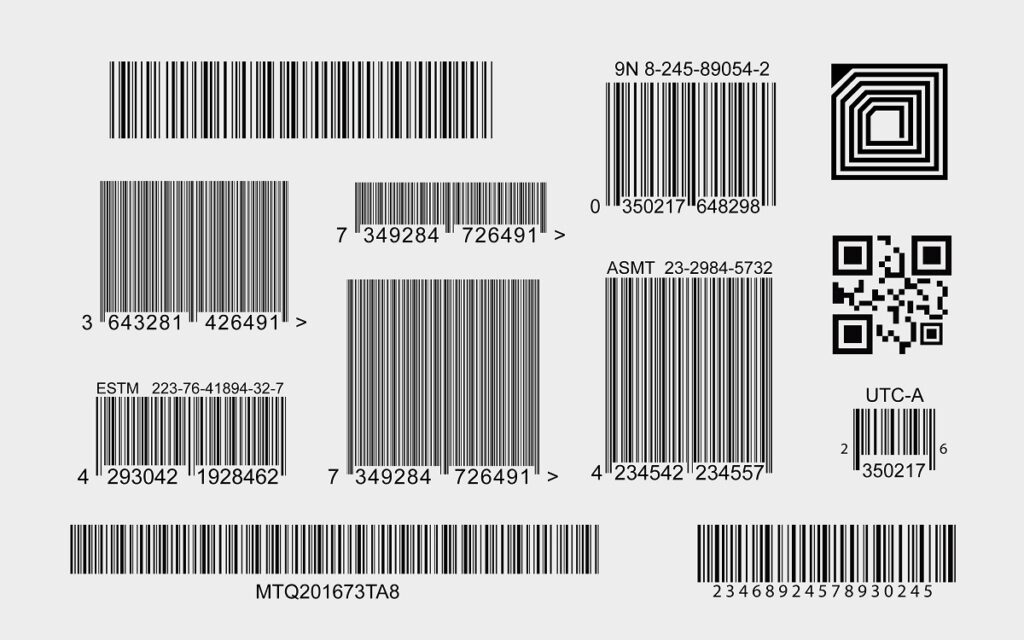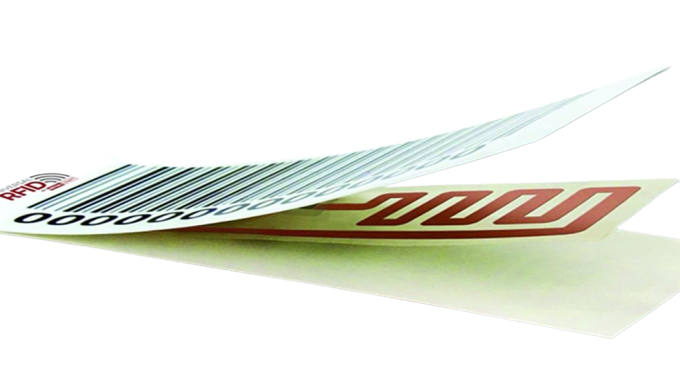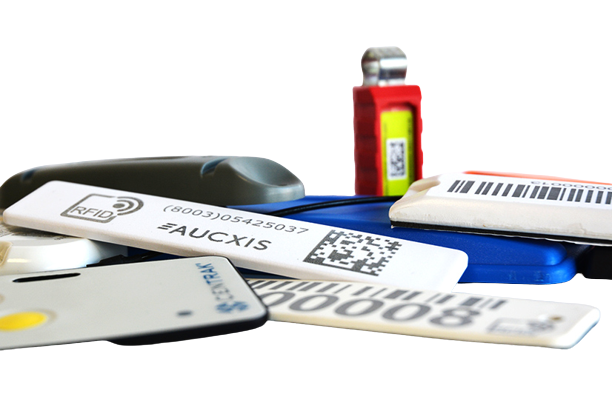RFID Label Revolution: The Catalyst of Modern Logistics

Table of Contents
Decoding the RFID Phenomenon
RFID technology has carved a significant niche for itself in the realm of RFID access control. Due to its convenience, security features, and automation capabilities, RFID has emerged as a highly popular choice for managing access to buildings, secure areas, and even computer systems. It allows for seamless, hands-free entry and exit while maintaining a high level of security and logging all access events for future reference.
However, it’s essential to recognize that RFID’s contributions go far beyond access control. The technology offers a plethora of solutions in numerous fields. From inventory management in retail to patient tracking in healthcare, from improving supply chain visibility to facilitating smart farming in agriculture, RFID continues to revolutionize processes and systems across a multitude of sectors. RFID labels, in particular, play a pivotal role in various sectors due to their potential to streamline operations and increase efficiency.
What are RFID Labels?
RFID labels are tags equipped with a small radio frequency identification (RFID) chip and an antenna. These components enable the labels to receive and respond to radio-frequency queries from an RFID transceiver or reader.
There are three types of RFID labels, classified based on their power sources:
- Passive RFID Labels: These labels do not have their own power source. Instead, they draw power from the electromagnetic energy transmitted by an RFID reader.
- Active Labels: These labels have their own power source, usually a built-in battery. This allows for longer read ranges and larger data capacities.
- Semi-passive Labels: These labels also have their own power source, but they only use it to power the chip, relying on the reader for the radio signal.
How Do RFID Labels Function?
The functioning of labels involves a combination of tags, readers, and software:
- Tag: The tag, attached to an object, contains the RFID chip and antenna. The chip stores the data about the object, while the antenna enables communication with the reader.
- Reader: The RFID reader emits a radio wave in the range of the RFID label. When the label falls within this range, it sends back the information stored on its chip.
- Software: The data collected by the reader is then sent to an RFID software system where it is decoded and made available for further processing and analysis.
Each RFID label has a unique identifier that distinguishes it from others, making it possible to track individual items with precision. The labels can store a variety of data types, including serial numbers, shipping details, and even maintenance records.
The Components
| Component | Function |
|---|---|
| RFID Chip/Integrated Circuit (IC) | Stores and processes information |
| Antenna | Sends and receives signals |
| Substrate | Supports the chip and antenna |
| Adhesive | Attaches the label to the item |
| Protective Material | Shields the chip and antenna |
Where are RFID Labels Applied?
RFID labels have found diverse applications across various industries:
- Retail Industry: Enhancing inventory management and loss prevention
- Supply Chain and Logistics: Streamlining operations and improving accuracy
- Asset Tracking: Ensuring real-time visibility of assets
- Healthcare Industry: Managing patient data and tracking medical equipment
- Agriculture: Monitoring livestock and crop management
Pros and Cons of RFID Labels

RFID-labels have risen as a transformative force in various industries, from retail to healthcare. While they usher in significant advantages, they also present certain challenges. Understanding these pros and cons is crucial in leveraging RFID technology effectively.
| Pros/Cons | Details |
|---|---|
| Pros | |
| Speed and Efficiency | RFID labels enable quick and efficient scanning of items, allowing for multiple readings simultaneously and remotely, thereby reducing inventory time. |
| Read Range | Depending on the type and reader used, labels can be read from a distance, providing flexibility and convenience. |
| Durability | Labels can withstand harsh environments and conditions, making them suitable for a wide range of applications. |
| Large Data Capacity | Labels can hold more data compared to traditional barcodes, allowing for additional information like serial numbers, manufacturer details, and more. |
| Cons | |
| High Cost | The cost of implementing an RFID system can be high, especially for active labels that are more expensive than passive ones. |
| Interference Issues | Radio frequency interference can affect the reliability of RFID systems. Metals and liquids can cause problems for certain types of RFID labels. |
| Privacy and Security Concerns | Without proper safeguards, unauthorized individuals may potentially access the information stored on RFID labels, raising privacy and security issues. |
| Technical Complexity | Implementing an RFID system requires technical knowledge and expertise, which may be challenging for some organizations. |
RFID Labels vs Other Technologies
While RFID labels, barcodes, QR codes, and NFC all serve similar purposes, their effectiveness varies. RFID labels generally offer better range and data capacity compared to the others.
| Comparison Factors | Labels | Barcodes | QR Codes | NFC |
|---|---|---|---|---|
| Read Range | Can be read from a distance, varies from few centimeters to several meters | Must be within direct line-of-sight, typically a few centimeters | Must be within direct line-of-sight, typically a few centimeters | Typically up to 4 inches (10 centimeters) |
| Speed | Can read multiple tags simultaneously | One at a time | One at a time | One at a time |
| Data Capacity | Can store significant amounts of data | Limited data storage | Can store more data than barcodes but less than RFID labels | Can store significant amounts of data, similar to RFID |
| Durability | Highly durable, can withstand harsh conditions | Can be affected by dirt or damage | Can be affected by dirt or damage | Fairly durable, but can be affected by damage |
| Cost | More expensive due to complexity and technology | Less expensive, simple technology | Less expensive, simple technology | Cost is in between RFID labels and barcodes/QR codes |
| Interactivity | Read and write capabilities, data can be updated | Read-only | Read-only | Read and write capabilities, data can be updated |
| Security | Can have advanced security features | Low security | Low security | Can have advanced security features |
| Application Fields | Broad range of industries, from retail to healthcare | Broad usage, predominantly in retail | Expanding usage, including marketing, product information | Emerging usage in payments, data sharing, access control |
How to Choose the Right RFID-Label?

Selecting the appropriate RFID-label depends on several factors like frequency range, read range, environmental conditions, size, form factor, and cost.
| Criteria | Explanation | Suggested Action |
|---|---|---|
| Frequency Range | Different RFID labels operate at different frequency ranges, which affect read distance and speed. | Choose a frequency range that best fits your application. Low frequency labels are suitable for short-range applications while ultra-high frequency labels offer longer read ranges. |
| Read Range | The read range is the distance within which an RFID reader can read a label. | If your application requires long-range scanning, opt for labels that provide a larger read range. |
| Environmental Conditions | RFID labels need to withstand the conditions in which they will be used, such as temperature, humidity, and exposure to chemicals or sunlight. | Choose a label designed to endure the specific environmental conditions of your application. For harsh conditions, select rugged, weather-resistant labels. |
| Size and Form Factor | The physical size and shape of the label must fit the item to which it will be attached. | Consider the size and shape of your item before choosing a label. Labels come in various forms, including tags, stickers, and wristbands. |
| Cost | Cost is a significant factor. It includes not only the price of the label but also the cost of the RFID system, including readers and software. | Assess your budget and the potential return on investment from implementing an RFID system. Consider both upfront costs and long-term value. |
| Data Capacity | Different RFID labels can store varying amounts of information. | Depending on your data needs, select a label with an appropriate data capacity. Larger data capacity is beneficial for applications that require storing extensive information on the label. |
| Security Features | Some RFID labels offer enhanced security features to protect data. | If your application involves sensitive data, opt for RFID labels with advanced security features. |
Top RFID Label Manufacturers
These RFID label manufacturers are shaping the landscape of tracking and data management across multiple industries.
1. Zebra Technologies
Zebra Technologies is a renowned name in the field of RFID technology. The company offers an extensive range of labels suitable for a wide array of applications in different sectors, including retail, healthcare, and manufacturing.
2. Avery Dennison
Avery Dennison is recognized for its innovative RFID solutions. The company manufactures high-quality RFID labels designed to enhance inventory management, supply chain efficiency, and asset tracking.
3. Alien Technology
Alien Technology is a global leader in the production of labels, known for their reliable performance. The company offers RFID labels that can withstand harsh environmental conditions, making them a popular choice for logistics and industrial applications.
4. Honeywell
Honeywell provides a diverse range of RFID labels that are widely used in various industries, including aerospace, automotive, and pharmaceuticals. The company’s labels are appreciated for their durability, read range, and data storage capacity.
5. Impinj
Impinj is well-known for its advanced RFID solutions. The company produces high-performance labels that are widely utilized in retail, healthcare, and other sectors for their impressive read range and data accuracy.
6. NXP Semiconductors
NXP Semiconductors offers labels that are recognized for their superior performance and reliability. Their labels find use in a broad range of applications, including consumer goods, automotive, and industrial sectors.
What Lies Ahead for RFID Labels?
As technology continues to advance at an incredible pace, we can expect to see the capabilities of these revolutionary labels expand and their applications become even more diverse. Let’s take a look at what lies ahead for labels.
Emerging Trends in RFID Technology
Several trends are expected to influence the future of labels. They include:
- Miniaturization: The ongoing trend of making electronic devices smaller and more efficient is likely to impact RFID labels. Smaller labels could be used in more diverse applications, including tracking smaller objects or embedding in wearable devices.
- Lower Costs: As the technology becomes more mature and widespread, the cost of RFID labels and systems is expected to decrease, making it more accessible for smaller businesses and more extensive implementations.
- Higher Data Capacities: Advances in technology will likely enable labels to store more information, offering greater utility in data-intensive applications.
- Enhanced Security Features: As privacy and security concerns continue to be crucial, we can expect to see RFID labels equipped with advanced security features to protect data from unauthorized access.
Potential New Applications
As RFID technology advances, we’re likely to see it used in new and innovative ways. Some potential future applications include:
- Biomedical Applications: RFID labels could be used in healthcare to track patient data or monitor the conditions of medical equipment.
- Smart Homes and Cities: RFID labels could play a role in the rising trend of smart homes and cities, providing real-time tracking and control of assets and utilities.
- Environment Monitoring: RFID labels could be used to monitor environmental conditions, such as temperature, humidity, or pollution levels.
- Advanced Supply Chain Management: With increased data capacity and lower costs, RFID labels could enable more comprehensive and detailed management of supply chains, even in smaller businesses.
FAQs
Conclusion
RFID labels have emerged as a cornerstone of modern tracking and logistics systems. From retail to healthcare, these innovative tools are reshaping the way businesses operate, bringing unprecedented levels of efficiency and accuracy. Despite the challenges, the adaptability and diverse applications of RFID labels underscore their potential and the exciting possibilities they hold for the future.
Navigating the label revolution is no easy task, with an array of types and components to understand, and numerous factors to consider when choosing the right label. However, armed with this knowledge, one can confidently embrace this transformative technology, reaping its benefits while mitigating its drawbacks.
As we stand on the brink of a new era marked by the Internet of Things and Artificial Intelligence, it’s clear that labels will continue to play a pivotal role in shaping our world. In essence, they represent not just a technological innovation, but a catalyst for change, driving us towards a more connected, efficient, and insightful future.